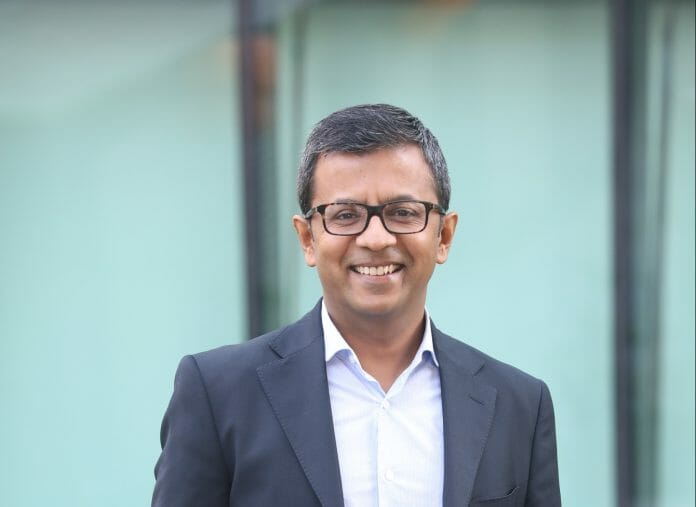Raghav Gupta, Managing Director, Asia Pacific, Coursera
The COVID-19 pandemic created the “largest disruption of education systems in history,” according to the United Nations. Higher-ed institutions acted with urgency, leveraging existing online learning platforms, like Coursera, while building their own technology backbone. As we enter into the recovery phase, it is evident that what started as a short-term response to the COVID-19 crisis has resulted in an enduring digital transformation of higher education. While the move off-campus isn’t permanent, higher education as we know will evolve.
Like the rest of the world, schools and universities in Malaysia also leapfrogged the future of learning, making online education the core of their student experience. In Malaysia, Brickfields Asia College (BAC) Education Group, started using Coursera for Campus to offer full-scale blended learning. Such partnerships also allow universities to better equip students with industry-relevant, multidisciplinary skills, preparing them for the jobs of the future. Ideas from the COVID-impacted classroom don’t just have the potential to solve challenges for students right now. We believe they can be applied to create a much more impactful higher education system for the future.
Turning future-ready with blended learning
Almost two years in, several remote teaching models have emerged, and it seems that not all methods are equally engaging. Many institutions defaulted to fully synchronous instruction during the emergency remote teaching phase, where faculty move their lectures online through video conference tools. This model can lead to burnout for both students and instructors, and is often associated with consternation surrounding student attention.
On the other spectrum, many institutions are also deploying fully asynchronous teaching, where universities offer ready-made courses from top institutions on online learning platforms like Coursera, for-credit to supplement their degree offerings. Professors can curate courses to fill curriculum gaps and ensure new content is aligned with their industry demands. This supplemental option is student-friendly because it is flexible, self-paced, and it allows them to easily explore new interests outside their major.
Blended learning, parts asynchronous and synchronous has emerged as a popular path for universities. Students can also come together with instructors in a virtual classroom to discuss ideas and apply skills with hands-on projects and assessments.
Preparing students for high-growth digital jobs
Now more than ever, graduating students need to have the necessary job-relevant skills. Yet for higher-ed institutions, the short shelf life of tech courses poses a serious challenge for curriculum development. By integrating blended models, institutions can effectively create a path to supplement foundational knowledge taught in campuses with learning that delivers cutting-edge skills to improve students’ employability.
As more jobs require digital skills, we expect students and employers will increasingly look to universities to prepare students for this new competitive labour market. Future jobs are expected to be highly digital, so universities must build curricula that teach skills across cybersecurity, data science, and cloud computing. Universities can also supplement degree programs with courses taught by leading industry educators like Google, Amazon, and Facebook, whose tools are often used on the job. We are already seeing colleges in Malaysia narrowing the gap for high-demand skills, with top courses on Coursera including Financial Markets (Yale University), Marketing in a Digital World (University of Illinois at Urbana-Champaign), Foundations: Data, Data, Everywhere (Google) and Python for Data Science, AI and Development (IBM).
Learning to apply job-relevant skills will be as valuable for students entering the workforce. ‘Hands-on’ learning online has also accelerated as a trend through the pandemic. The popularity of guided projects soared on Coursera as students enrolled to gain hands-on experience with tools like Python, SQL, HTML, Jupyter Notebooks, Java, R, Tensorflow and Google Analytics, practising and mastering the application of these in-demand skills, using tools in real-world scenarios.
Transitioning into lifelong learners
We have entered a future where students and professionals will continue developing new skills. As the adoption of online learning becomes entrenched, this transition will become both seamless and viable. Professionals won’t need to uproot their families or move to a new city to upgrade their skills. Online learning models offer built-in flexibility, helping people learn at their own pace and time, with the convenience of learning on mobile or studying both online and offline. Over time, universities will evolve to serve different student populations, on-campus and online, customizing the delivery of learning to work for every learner’s life.
Indeed, the student experience is no longer limited to the walls of the campus and the typical learning years. The pandemic may have unleashed the world’s biggest online learning experiment, helping students and institutes find a solution that restored academic continuity. But far beyond the present, online learning will find new interpretations in Malaysia’s higher education system to produce skilled talent contributing to the country’s digital-first economy vision.









